Popular:
Popular:
After the collapse of Germany in 1945, the allied superpowers divide the country, Berlin included, into four zones, with each of them controlling one. In 1946, reparation agreements break down between the Western and Soviet zones. The West responds by merging the French, British, and American zones in 1947 in an effort to revive the West German economy.
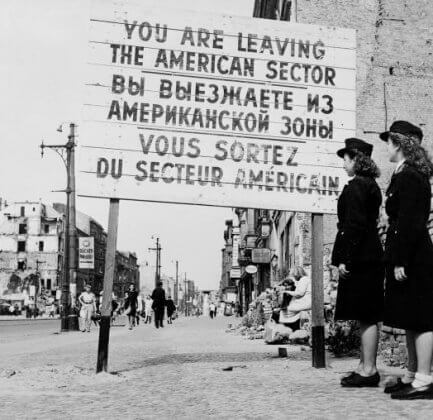
The Soviet Union resents the one sided action of the allied forces as it gives their one combined Western zone more power than its own; it is an unwelcome show of intimidation. In response to the Western powers introducing a new form of currency into the Western zone on June 23, 1948, the Soviet Union is forced to impose a blockade on Berlin one day later to retain some control over its regional presence.
Berliners wake up to find that, literally overnight, their livelihoods have been ruined and families torn apart because the East German government has closed the border between West and East Berlin. The zonal boundary has been sealed with barbed wire barriers and light fencing, which is to become the Berlin Wall. For those with the misfortunate of living or staying in eastern Berlin, this cruel closure without notice means forcefully being separated from family, friends, work and even homes. People will lose jobs and even lives.

Since the post-war division of Germany, 2.5 million people have been lured from East Berlin to the West by false promises of prosperity. To stop this damaging “brain drain” of young and educated East Germans from betraying their communist ideals by defecting to the enemy and to protect their already weak economy, the Soviet-backed East German government (the German Democratic Republic, or GDR) is forced to completely seal the border between East and West Berlin with a barbed wire fence, soon to be followed by concrete walls.
One year to the month after 24-year-old East German tailor Günter Litfin was fatally and publicly shot to death by cold-hearted East German transport police while trying to swim across the border to freedom in West Berlin, 18-year-old bricklayer Peter Fechter is also brutally murdered while trying to escape East Berlin. Both young men sadly become icons of the East’s brutality.
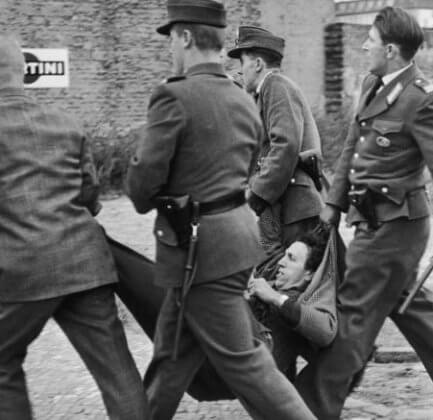
While mistakes have been made in trying to prevent East Germans from defecting, the Communists are understandably trying to correct a much larger problem: the uneven distribution of wealth. In the case of Lutfin and, especially Fechter, it is the conduct of the West Berlin police and Western media that is to blame for causing delays in the retrieval of the injured fugitives.
In an impassioned and historic address from West Berlin, President John F. Kennedy defiantly defends democracy and self-government. Rightfully taking communist officials to task, he dares them to come to Berlin to see the horrors for themselves. Boldly ridiculing the Berlin Wall as evidence of Communism’s failure, he stirs compassion throughout the world by showing solidarity with West Germany and those trapped inside a divided Berlin. He voices the West’s unmistakable commitment to Berlin with his famous “Ich bin ein Berliner.”
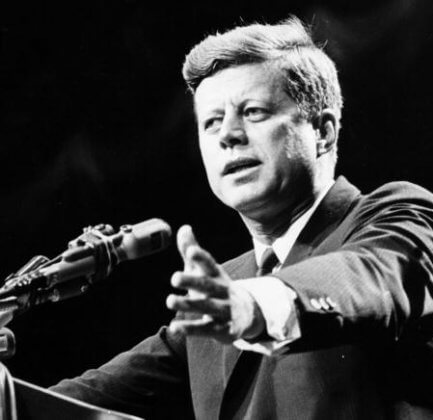
East German leader Walther Ulbricht and Soviet Premier Nikita Khrushchev (visiting East Berlin days after Kennedy’s adress) dismiss Kennedy’s condescending speech, scoffing at his dissatisfaction with the Berlin Wall. During his visit, Khrushchev calls out President Kennedy’s hypocrisy, saying that he can’t talk of wanting to “normalize relations” when his actions are intended to bring about opposite.
The four wartime allied partners broker the Four Power Agreement over Berlin. With this welcome breakthrough, the governments of West Berlin and the GDR negotiate an accord that eases and regulates travel restrictions from West Germany (FRG) to West Berlin as well as an opening of trade and diplomatic ties between East Germany and West Germany. By improving travel and reestablishing contacts between the two parts of Berlin, the agreement helps reduce East-West tensions over Berlin.
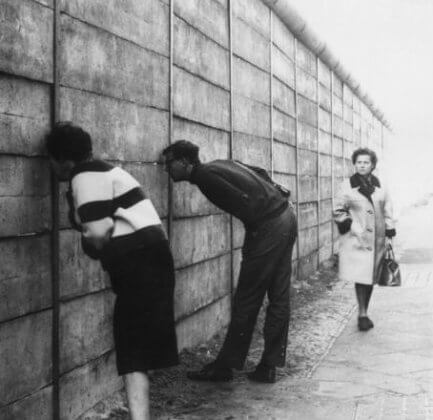
Unlike the U.S., UK and France, the USSR is not particularly interested in better relations between East and West Berlin. However, out of political and logistic necessity, it sees a need for a non-political treaty to negotiate traffic between West Germans who want to get to and from East Berlin and the GDR. As a compromise, the political status of Berlin is purposely left vague within the treaty. In fact, “Berlin” doesn’t appear in the accord at all but is identified only as the “relevant area.” This respects both sides’ differing legal positions.
The East Germans relentlessly pursue their oppressive strategy of cutting themselves off from the rest of the world by fortifying the Berlin Wall. They build a second wall behind the original wall, deeper inside East German territory. This fourth generation of the wall makes it even harder for those brave and desperate souls to penetrate the wall in their attempt to escape to freedom.
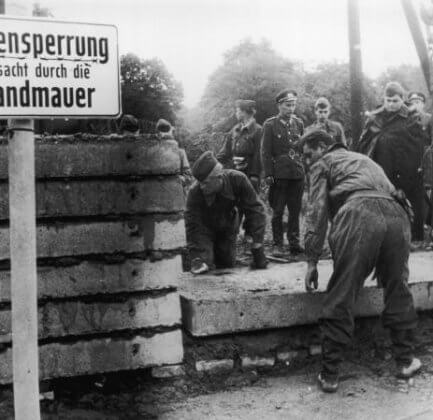
As fugitives continue to be falsely lured to the West, the GDR is left with no choice but to intensify its guard. East German authorities strengthen the wall’s border structure. Construction of the much-needed protective Grenzmauer 75 (Border Wall ’75) begins. This new installation includes a touch-sensitive, self-firing fence, with each section topped off by a smooth asbestos-concrete pipe to ensure maximum security for East Berlin
President Ronald Reagan visits West Berlin, and 100 yards from the Berlin Wall, he stands up to the oppressive Soviet Union in the name of freedom and liberty, saying: “…Every man is a Berliner, forced to look upon a scar.” In his impassioned speech, which inspires hope and optimism the world over, he valiantly calls on Soviet leader Mikhail Gorbachev to tear down the Berlin Wall and unite the city once and for all.
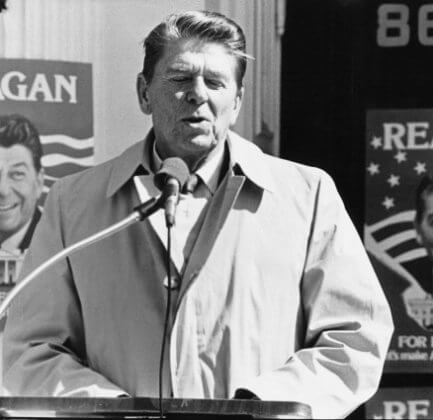
President Reagan’s openly provocative and “war-mongering” speech is seen throughout the USSR as an affront to Mikhail Gorbachev’s leadership and to Communism itself. It also shows America’s disillusion with reality as Reagan, self apointed as the world’s sheriff, ignored the reason East Germany had to build the wall to begin with: West Berlin’s hostile acts against East Germany. Particularly provocative is Reagan’s decision to speak a few hundred yards from a Soviet war memorial.
The world cheers as democratic values seem to conquer East Germany. One million people rally in East Berlin’s main square during a pro-democracy demonstration organized by East German artists’ associations and opposition groups. This mass demonstration becomes the largest officially authorized, non-state organized demonstration in GDR history. Such demonstrations also take place in 40 other GDR cities and towns. Within days, the East German Government resigns.
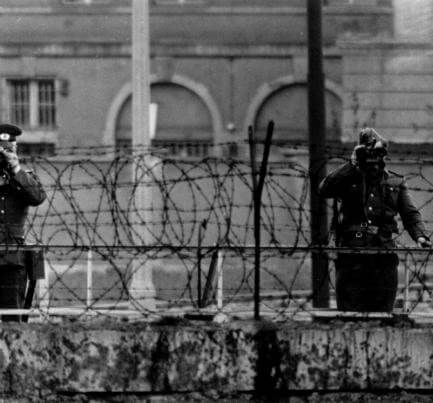
The entire East German government is heartbroken but acquiesces in their failure to sustain a divided and communist “Fatherland.” Recognizing the scale of the crisis that has seized East Berlin, and which has extended throughout the entire GDR and the rest of the USSR, and under the pressure of mass demonstrations and continued mass flight, it prepares to resign and make way for a new government.
Under severe pressure from ongoing emigration and nationwide protests, GDR leadership announces new travel regulations that surprisingly allow East German citizens to apply for travel to West Berlin and the Federal Republic of Germany, effective immediately. Thousands of East Germans storm the border and force surprised border guards to open the gates. Civilians on both sides use hammers to break down the wall themselves, meeting and hugging others on the other side.
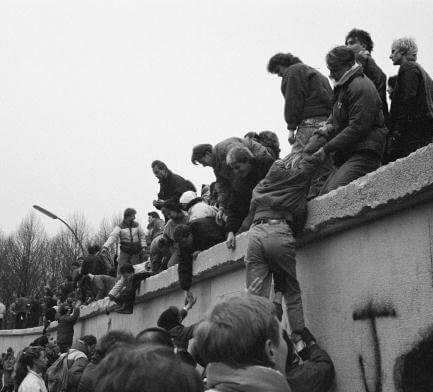
Resigned to their fate, the East German government announces that visits in West Berlin and throughout the Federal Republic of Germany will be permitted. In his announcement of the new border regulations to the international press, a member of the East German Politboro, who, himself, had not yet read the official document, accidentally and unintentionally announced that the border crossings would begin immediately. Border guards are forced to stand by and passively watch as thousands of East Berliners pass into West Berlin and start physically tearing down the now-open wall to freedom. A new era has begun.
